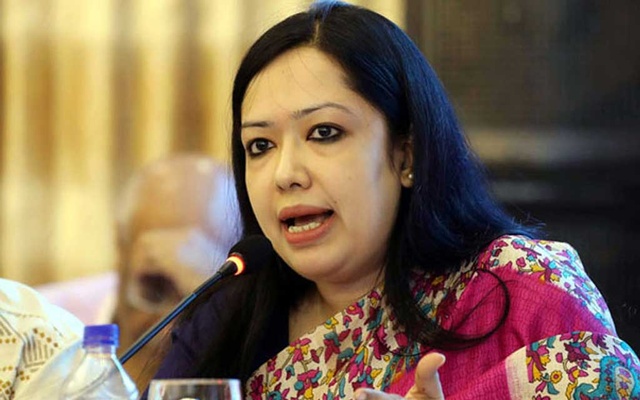The Daily Star

Last update on: Wed May 7, 2025 08:00 AM

Why do religious pressure groups like Hefazat single out women’s rights for moral outrage? The answer may lie not just in patriarchy but also in the political economy of power brokerage in the modern nation-state.
One important reason why gender reform provokes outsized outrage—while violations of Islamic prohibitions on riba (interest or usury), elite corruption, or exploitative labour markets do not—is that family law has historically been the only legal domain where Islamic law retained formal legitimacy under colonial rule. During British colonial governance, Islamic law was displaced from public, commercial, and criminal spheres and confined almost exclusively to the private realm of marriage, divorce, maintenance, and inheritance. This circumscription effectively reconstituted religion as a moral code about domestic life and gender hierarchy, setting the terrain upon which postcolonial religious actors could assert authority.
Hefazat’s reaction to these reforms is not a principled defence of Islamic law as much as it is a politically expedient and selectively enforced moral panic. It is strategically centred on gender—the one domain where they can still assert relevance and authority—rendering the struggle existential for their continued role as arbiters of public morality.
Anthropologists like Talal Asad have encouraged us to view the invocation of religion not as a static set of beliefs but as a “discursive tradition” rooted in power struggles and negotiations. This helps us see that the very concept of “Islamic law” invoked by Hefazat is strategically mobilised in moments when power over social authority—particularly over gender—is threatened. Crucially, the reforms they oppose displace religious actors from their traditional roles as custodians of morality and law in family life. Reform efforts like the Women’s Affairs Reforms Commission become an existential threat because they signal a shift in normative authority from mosque to ministry, from imam to bureaucrat in the one area where they were able to retain sole authority.
In other words, Hefazat’s selective moralism reflects not theological fidelity, but strategic power preservation. Financial systems, though profoundly un-Islamic in their operation of riba, are opaque, deeply entrenched, and implicate the very elites who fund and protect Hefazat’s institutions. Challenging them would mean confronting powerful economic interests and dismantling networks that benefit both secular and religious actors. Women’s rights, by contrast, are a soft target: they offer a public spectacle through which Hefazat can perform guardianship of religious morality, mobilise popular support, and assert relevance—without threatening the economic status quo.
This selective indignation is not new. As postcolonial scholars of religion have observed, gender has long functioned as a site where national and religious authenticity is contested. In Bangladesh, women’s bodies have been politicised since the Liberation War. Religious actors instrumentalise gender not because it is the most urgent moral issue, but because it is the most useful terrain for virtue theatre.
Nor is this instrumentalisation confined to religionists. Secular authoritarian leaders like Sheikh Hasina have similarly deployed women’s rights as a strategic façade—championing gender reforms not to dismantle patriarchal power, but to legitimise unelected, increasingly autocratic rule. Her regime has consistently used gender equality indices and the optics of female empowerment to attract donor funding, deflect international scrutiny, and frame her rule as uniquely progressive in a male-dominated region. Gender is currency for power preservation on both sides.
Yet when politically expedient, these seemingly antagonistic forces—Hasina’s secular authoritarianism and Hefazat’s religionist traditionalism—entered into an unholy alliance. In the aftermath of the 2013 Shahbagh protests, Hasina’s government made calculated concessions to Hefazat, including formal recognition of Qawmi madrasa education through the Dawra-e-Hadith degree equivalency and the quiet rollback of gender-sensitive educational materials. In exchange, Hefazat functioned as a bulwark against public outrage over her crackdown on Jamaat-e-Islami, offering religious cover as she banned the party.
This partnership was mutually beneficial: Hasina displaced Jamaat as the dominant arbiter of religious legitimacy by empowering a politically non-partisan, discursively Islamic actor in Hefazat, while Hefazat gained unprecedented state recognition and a new platform to regulate morality in the public sphere without contesting elections. Ironically, in the post-ouster landscape of Hasina’s rule, we now witness former adversaries from Hefazat and Jamaat realigning—revealing not a principled commitment to doctrine, but a fluid opportunism rooted in survival, influence, and realpolitik.
In such circumstances, the task is not to take either side’s rhetoric at face value, but to look past the charade—whether cloaked in piety or progress—and ask who benefits, who speaks, and whose lives are being regulated in the name of piety or progress.
Taqbir Huda is a human rights lawyer, currently pursuing graduate studies at Harvard Law School. He can be reached at taqbirhuda@gmail.com.
Views expressed in this article are the author’s own.









